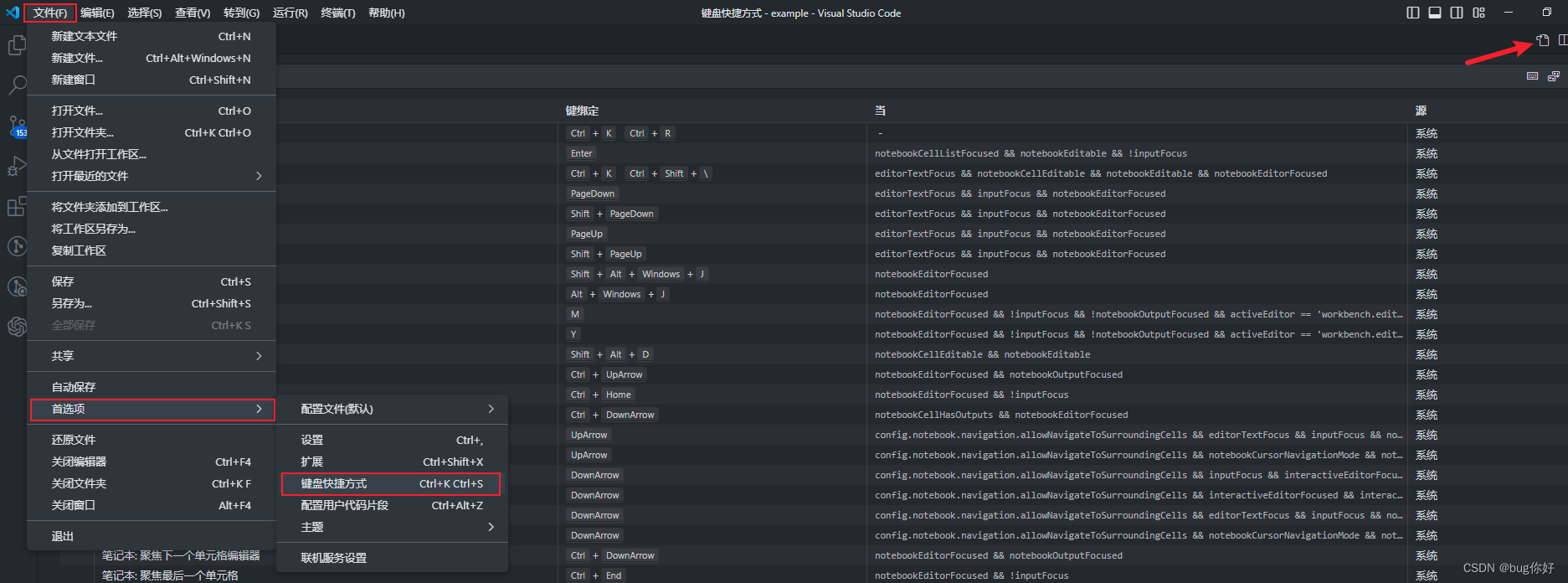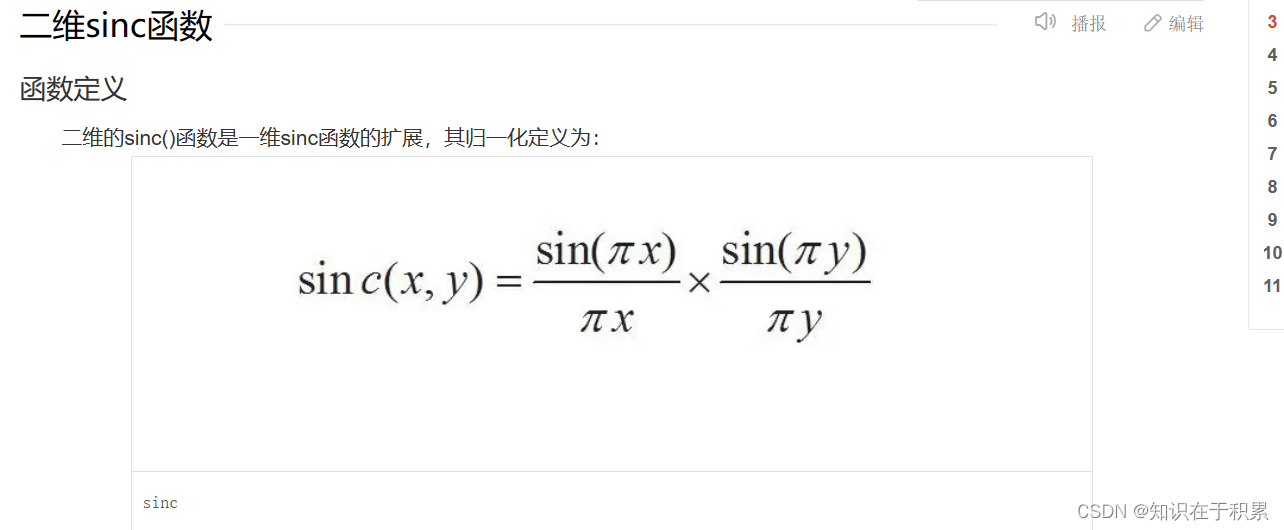前言
YOLOv8-seg 分割代码详解(一)Predict
YOLOv8-seg 分割代码详解(二)Train
YOLOv8-seg 分割代码详解(三)Val
本文主要以源码+注释为主,可以了解 YOLOv8 计算评价指标的具体实现方法。
模型原始输出
python">preds = model(batch['img'], augment=augment)
preds: (list:2)
0: (Tensor:(b, 4+cls_n+32, anchors))
1: (tuple:3)
0: (list:3)
0: (Tensor:(b, 64+cls_n, 80, 80))
1: (Tensor:(b, 64+cls_n, 40, 40))
2: (Tensor:(b, 64+cls_n, 20, 20))
1: (Tensor:(b, 32, anchors))
2: (Tensor:(b, 32, 160, 160))
输出预处理
NMS, 38 = 4 + class_score+class + 32 38=4+\text{class\_score+class}+32 38=4+class_score+class+32
python">preds = self.postprocess(preds)
preds: (tuple:2)
0: (list,b)
i: (Tensor:(obj_i, 38))
1: (Tensor:(b, 32, 160, 160))
更新指标
python">self.update_metrics(preds, batch)
def update_metrics(self, preds, batch):
"""Metrics."""
"""遍历每张图像的输出"""
for si, (pred, proto) in enumerate(zip(preds[0], preds[1])):
idx = batch['batch_idx'] == si
cls = batch['cls'][idx]
bbox = batch['bboxes'][idx]
nl, npr = cls.shape[0], pred.shape[0] # number of labels, predictions
shape = batch['ori_shape'][si]
correct_masks = torch.zeros(npr, self.niou, dtype=torch.bool, device=self.device) # init
correct_bboxes = torch.zeros(npr, self.niou, dtype=torch.bool, device=self.device) # init
self.seen += 1
if npr == 0:
if nl:
self.stats.append((correct_bboxes, correct_masks, *torch.zeros(
(2, 0), device=self.device), cls.squeeze(-1)))
if self.args.plots:
self.confusion_matrix.process_batch(detections=None, labels=cls.squeeze(-1))
continue
# Masks
midx = [si] if self.args.overlap_mask else idx
gt_masks = batch['masks'][midx]
pred_masks = self.process(proto, pred[:, 6:], pred[:, :4], shape=batch['img'][si].shape[1:])
# Predictions
if self.args.single_cls:
pred[:, 5] = 0
predn = pred.clone()
ops.scale_boxes(batch['img'][si].shape[1:], predn[:, :4], shape,
ratio_pad=batch['ratio_pad'][si]) # native-space pred
"""
predn: (Tensor:(pn, 38))
pred_mask: (Tensor:(pn, 160, 160))
gt_mask: (Tensor:(1, 160, 160))
"""
# Evaluate
if nl:
height, width = batch['img'].shape[2:]
tbox = ops.xywh2xyxy(bbox) * torch.tensor(
(width, height, width, height), device=self.device) # target boxes
ops.scale_boxes(batch['img'][si].shape[1:], tbox, shape,
ratio_pad=batch['ratio_pad'][si]) # native-space labels
"""
labelsn: (Tensor:(ln, 5))
correct_bboxes: (Tensor:(pn, 10))
correct_masks: (Tensor:(pn, 10))
"""
labelsn = torch.cat((cls, tbox), 1) # native-space labels
correct_bboxes = self._process_batch(predn, labelsn)
correct_masks = self._process_batch(predn,
labelsn,
pred_masks,
gt_masks,
overlap=self.args.overlap_mask,
masks=True)
if self.args.plots:
self.confusion_matrix.process_batch(predn, labelsn)
# Append correct_masks, correct_boxes, pconf, pcls, tcls
self.stats.append((correct_bboxes, correct_masks, pred[:, 4], pred[:, 5], cls.squeeze(-1)))
"""后续关于绘图和存储的代码省略"""
self._process_batch
python">def _process_batch(self, detections, labels, pred_masks=None, gt_masks=None, overlap=False, masks=False):
"""
Return correct prediction matrix
Arguments:
detections (array[N, 6]), x1, y1, x2, y2, conf, class
labels (array[M, 5]), class, x1, y1, x2, y2
Returns:
correct (array[N, 10]), for 10 IoU levels
"""
if masks:
"""one-hot"""
if overlap:
nl = len(labels)
index = torch.arange(nl, device=gt_masks.device).view(nl, 1, 1) + 1
gt_masks = gt_masks.repeat(nl, 1, 1) # shape(1,640,640) -> (n,640,640)
gt_masks = torch.where(gt_masks == index, 1.0, 0.0)
if gt_masks.shape[1:] != pred_masks.shape[1:]:
gt_masks = F.interpolate(gt_masks[None], pred_masks.shape[1:], mode='bilinear', align_corners=False)[0]
gt_masks = gt_masks.gt_(0.5)
iou = mask_iou(gt_masks.view(gt_masks.shape[0], -1), pred_masks.view(pred_masks.shape[0], -1))
else: # boxes
"""最普通的iou"""
iou = box_iou(labels[:, 1:], detections[:, :4])
return self.match_predictions(detections[:, 5], labels[:, 0], iou)
IoU 细节
都是最简单的 IoU:交集 / 并集
python">def box_iou(box1, box2, eps=1e-7):
"""
Calculate intersection-over-union (IoU) of boxes.
Both sets of boxes are expected to be in (x1, y1, x2, y2) format.
Based on https://github.com/pytorch/vision/blob/master/torchvision/ops/boxes.py
Args:
box1 (torch.Tensor): A tensor of shape (N, 4) representing N bounding boxes.
box2 (torch.Tensor): A tensor of shape (M, 4) representing M bounding boxes.
eps (float, optional): A small value to avoid division by zero. Defaults to 1e-7.
Returns:
(torch.Tensor): An NxM tensor containing the pairwise IoU values for every element in box1 and box2.
"""
# inter(N,M) = (rb(N,M,2) - lt(N,M,2)).clamp(0).prod(2)
(a1, a2), (b1, b2) = box1.unsqueeze(1).chunk(2, 2), box2.unsqueeze(0).chunk(2, 2)
inter = (torch.min(a2, b2) - torch.max(a1, b1)).clamp_(0).prod(2)
# IoU = inter / (area1 + area2 - inter)
return inter / ((a2 - a1).prod(2) + (b2 - b1).prod(2) - inter + eps)
def mask_iou(mask1, mask2, eps=1e-7):
"""
Calculate masks IoU.
Args:
mask1 (torch.Tensor): A tensor of shape (N, n) where N is the number of ground truth objects and n is the
product of image width and height.
mask2 (torch.Tensor): A tensor of shape (M, n) where M is the number of predicted objects and n is the
product of image width and height.
eps (float, optional): A small value to avoid division by zero. Defaults to 1e-7.
Returns:
(torch.Tensor): A tensor of shape (N, M) representing masks IoU.
"""
intersection = torch.matmul(mask1, mask2.T).clamp_(0)
union = (mask1.sum(1)[:, None] + mask2.sum(1)[None]) - intersection # (area1 + area2) - intersection
return intersection / (union + eps)
预测框在不同 IoU 阈值下是否正确检测到目标
python">def match_predictions(self, pred_classes, true_classes, iou):
"""
Matches predictions to ground truth objects (pred_classes, true_classes) using IoU.
Args:
pred_classes (torch.Tensor): Predicted class indices of shape(N,).
true_classes (torch.Tensor): Target class indices of shape(M,).
iou (torch.Tensor): IoU thresholds from 0.50 to 0.95 in space of 0.05.
Returns:
(torch.Tensor): Correct tensor of shape(N,10) for 10 IoU thresholds.
"""
"""
self.iouv: 0.5~0.95, 0.05间隔
correct: (Tensor:(pn, 10))
correct_class: (Tensor:(ln, pn))
"""
correct = np.zeros((pred_classes.shape[0], self.iouv.shape[0])).astype(bool)
correct_class = true_classes[:, None] == pred_classes
for i, iouv in enumerate(self.iouv):
"""
x: (Tensor:(n, 2))
n: 满足 IoU > threshold 且类别匹配的输出个数
2: [ln_idx,pn_idx]
"""
x = torch.nonzero(iou.ge(iouv) & correct_class) # IoU > threshold and classes match
if x.shape[0]:
# Concatenate [label, detect, iou]
"""matches: (Tensor:(n, 3)), 相当于在 x 每一项后面增添对应的 IoU 数值"""
matches = torch.cat((x, iou[x[:, 0], x[:, 1]].unsqueeze(1)), 1).cpu().numpy()
if x.shape[0] > 1:
"""根据 IoU 排序以后依次对 pn_idx 和 ln_idx 去重"""
matches = matches[matches[:, 2].argsort()[::-1]]
matches = matches[np.unique(matches[:, 1], return_index=True)[1]]
matches = matches[np.unique(matches[:, 0], return_index=True)[1]]
correct[matches[:, 1].astype(int), i] = True
return torch.tensor(correct, dtype=torch.bool, device=pred_classes.device)
统计指标
mAP 是对每个类别的 AP 取平均,AP 是 PR 曲线的面积。
python">def get_stats(self):
"""Returns metrics statistics and results dictionary."""
stats = [torch.cat(x, 0).cpu().numpy() for x in zip(*self.stats)] # to numpy
if len(stats) and stats[0].any():
self.metrics.process(*stats)
"""np.bincount: 统计非负整数出现次数, 此处为统计每个类别出现次数"""
self.nt_per_class = np.bincount(stats[-1].astype(int), minlength=self.nc) # number of targets per class
return self.metrics.results_dict
平均精度
python">def process(self, tp_b, tp_m, conf, pred_cls, target_cls):
"""
Processes the detection and segmentation metrics over the given set of predictions.
Args:
tp_b (list): List of True Positive boxes.
tp_m (list): List of True Positive masks.
conf (list): List of confidence scores.
pred_cls (list): List of predicted classes.
target_cls (list): List of target classes.
"""
"""
tp_b: (ndarray:(pn,10))
tp_m: (ndarray:(pn,10))
conf: (ndarray:(pn))
pred_cls: (ndarray:(pn))
target_cls: (ndarray:(ln))
"""
results_mask = ap_per_class(tp_m,
conf,
pred_cls,
target_cls,
plot=self.plot,
on_plot=self.on_plot,
save_dir=self.save_dir,
names=self.names,
prefix='Mask')[2:]
self.seg.nc = len(self.names)
self.seg.update(results_mask)
results_box = ap_per_class(tp_b,
conf,
pred_cls,
target_cls,
plot=self.plot,
on_plot=self.on_plot,
save_dir=self.save_dir,
names=self.names,
prefix='Box')[2:]
self.box.nc = len(self.names)
self.box.update(results_box)
python">def ap_per_class(tp,
conf,
pred_cls,
target_cls,
plot=False,
on_plot=None,
save_dir=Path(),
names=(),
eps=1e-16,
prefix=''):
"""
Computes the average precision per class for object detection evaluation.
Args:
tp (np.ndarray): Binary array indicating whether the detection is correct (True) or not (False).
conf (np.ndarray): Array of confidence scores of the detections.
pred_cls (np.ndarray): Array of predicted classes of the detections.
target_cls (np.ndarray): Array of true classes of the detections.
plot (bool, optional): Whether to plot PR curves or not. Defaults to False.
on_plot (func, optional): A callback to pass plots path and data when they are rendered. Defaults to None.
save_dir (Path, optional): Directory to save the PR curves. Defaults to an empty path.
names (tuple, optional): Tuple of class names to plot PR curves. Defaults to an empty tuple.
eps (float, optional): A small value to avoid division by zero. Defaults to 1e-16.
prefix (str, optional): A prefix string for saving the plot files. Defaults to an empty string.
Returns:
(tuple): A tuple of six arrays and one array of unique classes, where:
tp (np.ndarray): True positive counts for each class.
fp (np.ndarray): False positive counts for each class.
p (np.ndarray): Precision values at each confidence threshold.
r (np.ndarray): Recall values at each confidence threshold.
f1 (np.ndarray): F1-score values at each confidence threshold.
ap (np.ndarray): Average precision for each class at different IoU thresholds.
unique_classes (np.ndarray): An array of unique classes that have data.
"""
# Sort by objectness
"""按预测分类概率从大到小排序"""
i = np.argsort(-conf)
tp, conf, pred_cls = tp[i], conf[i], pred_cls[i]
# Find unique classes
"""标签中出现的类别及其对应的目标个数"""
unique_classes, nt = np.unique(target_cls, return_counts=True)
nc = unique_classes.shape[0] # number of classes, number of detections
# Create Precision-Recall curve and compute AP for each class
px, py = np.linspace(0, 1, 1000), [] # for plotting
ap, p, r = np.zeros((nc, tp.shape[1])), np.zeros((nc, 1000)), np.zeros((nc, 1000))
for ci, c in enumerate(unique_classes):
i = pred_cls == c
n_l = nt[ci] # number of labels
n_p = i.sum() # number of predictions
if n_p == 0 or n_l == 0:
continue
# Accumulate FPs and TPs
"""
fpc: (ndarray:(n,10))
tpc: (ndarray:(n,10))
n为当前类别的预测框数量, 以累加的方式得到不同阈值下的 tpfp 数量
"""
fpc = (1 - tp[i]).cumsum(0)
tpc = tp[i].cumsum(0)
# Recall
recall = tpc / (n_l + eps) # recall curve
r[ci] = np.interp(-px, -conf[i], recall[:, 0], left=0) # negative x, xp because xp decreases
# Precision
precision = tpc / (tpc + fpc) # precision curve
p[ci] = np.interp(-px, -conf[i], precision[:, 0], left=1) # p at pr_score
# AP from recall-precision curve
for j in range(tp.shape[1]):
ap[ci, j], mpre, mrec = compute_ap(recall[:, j], precision[:, j])
if plot and j == 0:
py.append(np.interp(px, mrec, mpre)) # precision at mAP@0.5
# Compute F1 (harmonic mean of precision and recall)
f1 = 2 * p * r / (p + r + eps)
names = [v for k, v in names.items() if k in unique_classes] # list: only classes that have data
names = dict(enumerate(names)) # to dict
if plot:
plot_pr_curve(px, py, ap, save_dir / f'{prefix}PR_curve.png', names, on_plot=on_plot)
plot_mc_curve(px, f1, save_dir / f'{prefix}F1_curve.png', names, ylabel='F1', on_plot=on_plot)
plot_mc_curve(px, p, save_dir / f'{prefix}P_curve.png', names, ylabel='Precision', on_plot=on_plot)
plot_mc_curve(px, r, save_dir / f'{prefix}R_curve.png', names, ylabel='Recall', on_plot=on_plot)
i = smooth(f1.mean(0), 0.1).argmax() # max F1 index
p, r, f1 = p[:, i], r[:, i], f1[:, i]
tp = (r * nt).round() # true positives
fp = (tp / (p + eps) - tp).round() # false positives
return tp, fp, p, r, f1, ap, unique_classes.astype(int)
用 PR 计算 AP
python">def compute_ap(recall, precision):
"""
Compute the average precision (AP) given the recall and precision curves.
Arguments:
recall (list): The recall curve.
precision (list): The precision curve.
Returns:
(float): Average precision.
(np.ndarray): Precision envelope curve.
(np.ndarray): Modified recall curve with sentinel values added at the beginning and end.
"""
# Append sentinel values to beginning and end
mrec = np.concatenate(([0.0], recall, [1.0]))
mpre = np.concatenate(([1.0], precision, [0.0]))
# Compute the precision envelope
"""
np.maximum.accumulate(arr)
返回数组每个元素是包括自身之前的所有元素最大值
例如: [3, 1, 4, 1, 5, 9, 2, 6, 5] -> [3 3 4 4 5 9 9 9 9]
"""
mpre = np.flip(np.maximum.accumulate(np.flip(mpre)))
# Integrate area under curve
method = 'interp' # methods: 'continuous', 'interp'
if method == 'interp':
x = np.linspace(0, 1, 101) # 101-point interp (COCO)
"""np.trapz: 梯形法则积分"""
ap = np.trapz(np.interp(x, mrec, mpre), x) # integrate
else: # 'continuous'
i = np.where(mrec[1:] != mrec[:-1])[0] # points where x-axis (recall) changes
ap = np.sum((mrec[i + 1] - mrec[i]) * mpre[i + 1]) # area under curve
return ap, mpre, mrec
best model 与提前结束训练
评估当前 epoch 训练好坏的指标是验证集上的 mAP,具体计算如下。训练时可用 patience=0 禁用提前结束训练,默认为50。
python">fitness = 0.1*(box_map50+seg_map50) + 0.9*(box_map+seg_map)





